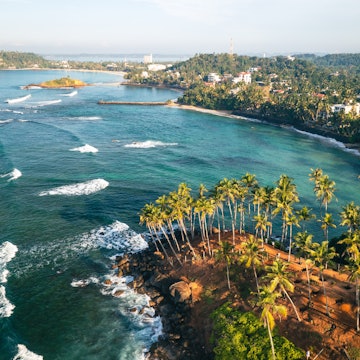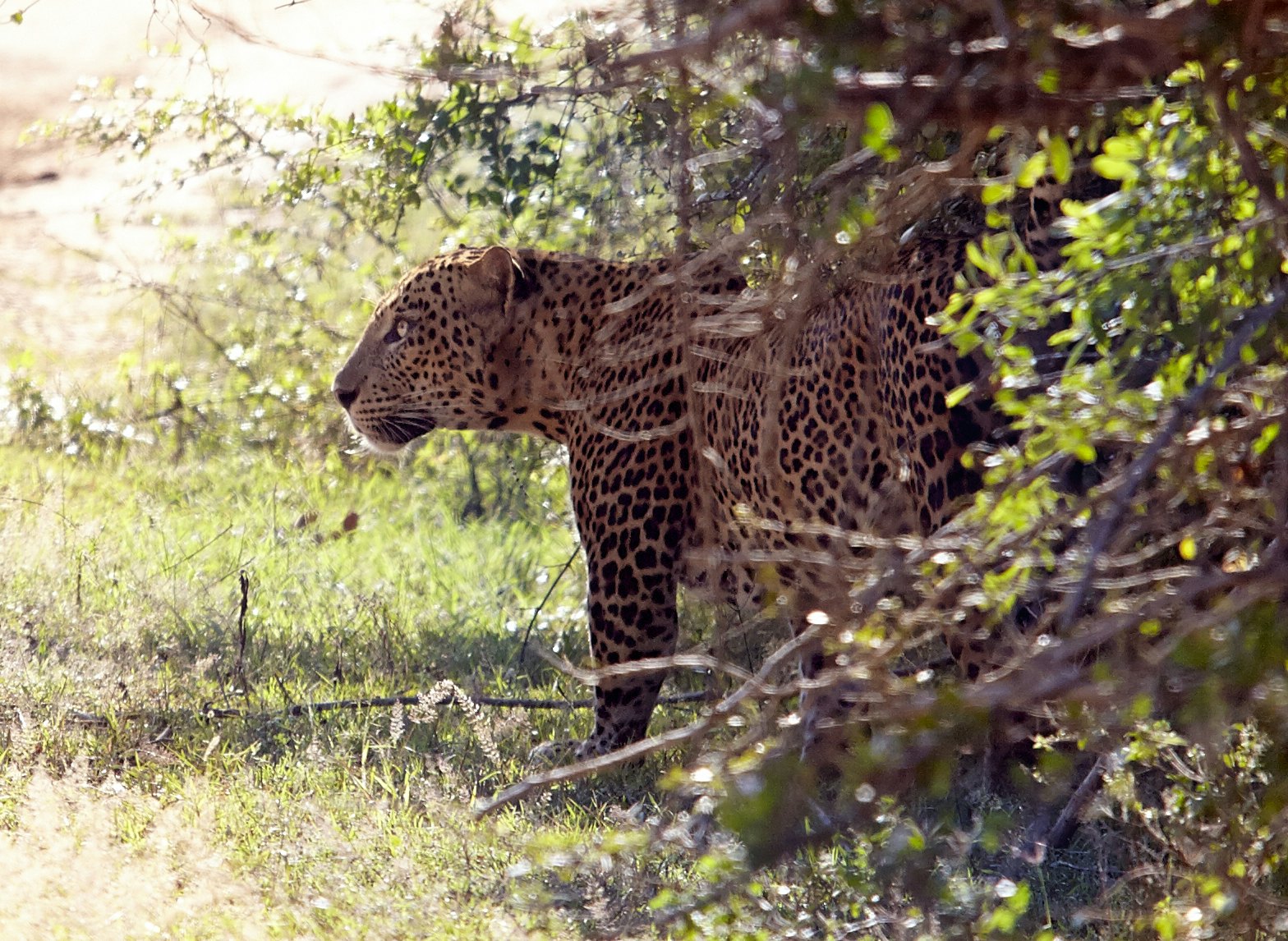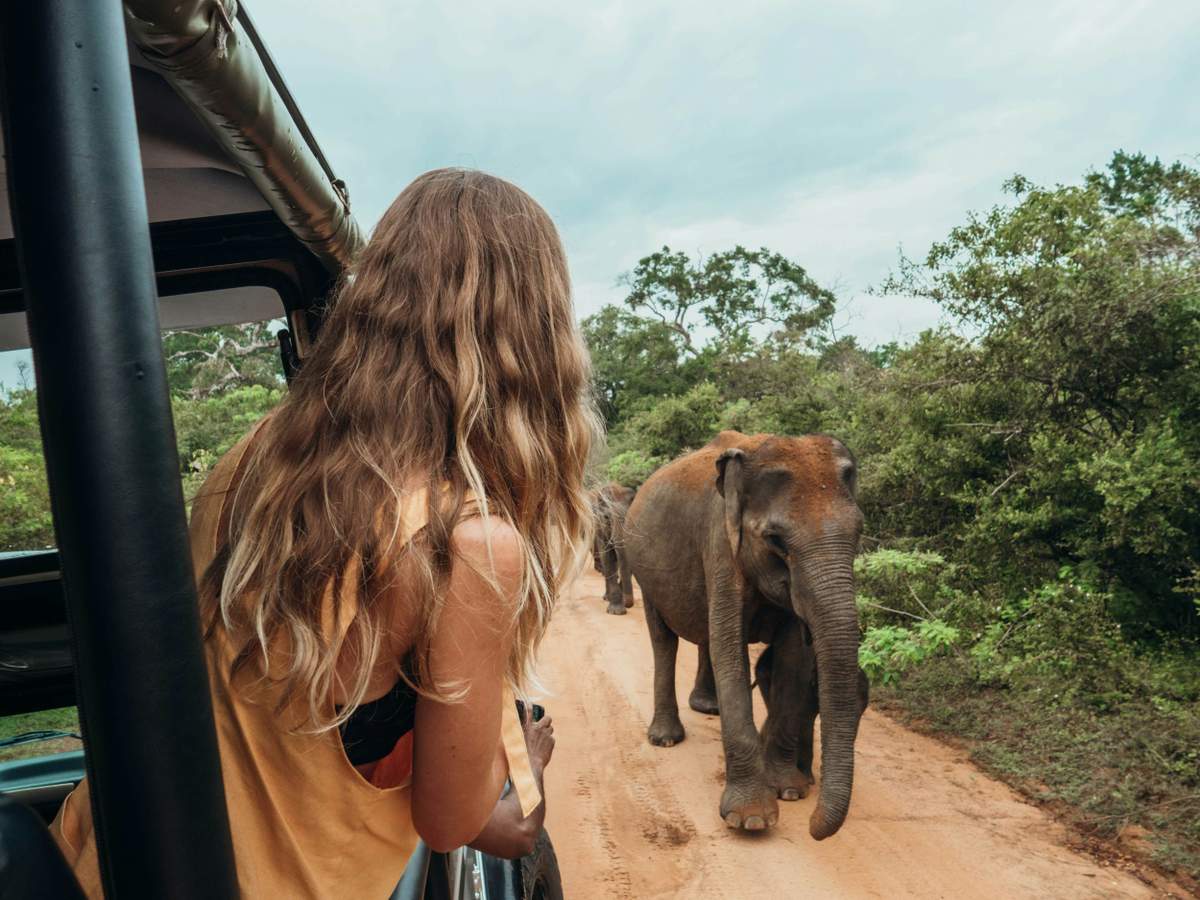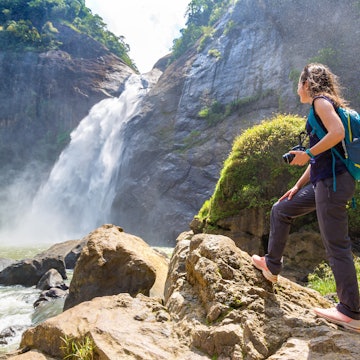

Here's where to go on safari in Sri Lanka. Matt Munro for Lonely Planet
For such a small island, Sri Lanka has an incredible diversity of wildlife. Not only is this the only country where you can spot both the world’s largest animals from land (elephant) and sea (blue whale), but it’s also one of the best places to see leopards. Throw in some amazing migratory birds, wetlands full of flamingos, and nighttime sightings of the adorable slender loris, and it’s clear that Sri Lanka is a surprisingly wild place. But with such incredible wildlife on display, it's important to be aware of responsible wildlife-watching practices and choose reputable operators.
Plan a safari or wildlife experience in Sri Lanka with this guide to the best places to go and how to view wildlife responsibly.

1. Seek out leopards and elephants in Yala National Park
Yala National Park is a vast region of dry woodland, open grasslands and waterholes that make for superb wildlife spotting, but it’s an extremely popular park (Sri Lanka’s most visited), so don’t expect to have it to yourself. Boasting the world’s densest concentration of leopards, Yala is considered one of the best parks for spotting these big cats. Panthera pardus kotiya, the subspecies you may well see, is unique to Sri Lanka.
Other inhabitants include an estimated 300 elephants, as well as shaggy-coated sloth bears and fox-like jackals. Sambars, spotted deer, boars, mongooses and monkeys are also present, along with startlingly large crocodiles and over 200 species of birds.
Most people join a half-day safari to Block I (141 sq km/54 sq miles), also known as Yala West, which was a hunting reserve until given over to conservation in 1938. It’s the closest to Tissa and so the busiest; at times 4WDs here mimic a pack of jackals in their pursuit of wildlife.
Dedicated wildlife enthusiasts keen to get off the beaten track might consider chartering their own (pricier) 4WD and experienced guide to enter the park elsewhere; at either the Katagamuwa entrance, for access to the quieter northern part of Block I and Block III, or at Galge, for access to the little-visited northern half of the wild Block III (and handy for those coming from Ella). Be prepared for rougher roads and less reliable spotting in these areas.
Planning tip: 4WD safaris are the only feasible way to visit Yala and neighboring Bundala National Park. You’ll easily find people to share vehicle costs for Block I in Yala, but for Bundala or other parts of Yala you’ll likely have to hire your own private 4WD and driver. It’s also possible (but harder) to rent a 4WD in Kataragama or Kirinda. Getting to Kataragama or Kirinda is easy, with buses running every 30 minutes or so from Tissa bus station.

2. Spot herds of elephants at Minneriya National Park
Dominated by the huge ancient water tank of Minneriya Wewa, the 89 sq km (34 sq miles) of scrub, forest and wetlands in this national park is a seasonal home to over 200 elephants, as well as toque macaques, sambar deer, buffalo, crocodiles and (rarely seen) leopards. Birds such as little cormorants, painted storks, herons and large pelicans all fish in the shallow waters. The dry season, from April to October, when water in the tank is at its lowest, is the best time to visit, but it’s possible to see elephants here at other times of year, too.
The initial 40-minute drive (along a poor dirt road) into the heart of the park is through dense forest, where wildlife sightings are rare. But then the landscape opens up dramatically, and the views across the tank are superb. Early mornings are generally best for spotting birds, while late afternoon is the best time to see groups of elephants – a thrilling experience.
Planning tip: Minneriya is easily visited from either Polonnaruwa or Sigiriya. Most people arrange a safari through their guesthouse, but it is also possible to arrange park transportation directly with 4WD owners at the park gates (Rs 10,000/US$34). Buses between Polonnaruwa and Dambulla, Kandy or Anuradhapura all pass by the Minneriya park entrance. Hurulu Eco Park is 2.5km (1.5 miles) north of Habarana junction and so closer to Sigiriya; you can even reach the park entrance by train at Habarana station.

3. Visit Uda Walawe National Park, home to 600 wild elephants
Uda Walawe National Park is a beautiful, sparsely vegetated savannah-like reserve centered on the Uda Walawe Reservoir, the main watering hole for the park’s wild game. Although the 308-sq-km park (119 sq miles) is home to wild buffalos, spotted and sambar deer, sloth bears, crocodiles, mongoose and even the occasional leopard, Uda Walawe is easily most famous for its elephants.
This popular Sri Lankan park isn’t just one of the best places to see the majestic Sri Lankan elephant – it’s one of the best places to see elephants in the entire world. Uda Walawe has over 600 of the giants roaming a relatively small parkland, traveling in herds of up to 30.
While there is apparently an elephant-proof fence circling most of the park, beware as you’re traveling around, as elephants have been known to wander in and out of the unfenced areas. Book your safari for the early morning or late afternoon, when the animals are at their most active.
Park entrance fees are between US$35 and US$37 per person (the per person rate goes down for larger groups), and you can get a guide and vehicle at the gate for around Rs 10,000 (US$34) for a half-day (three- to four-hour) tour (plus tip). Tours booked through agencies, guesthouses or local guides beforehand may be more expensive, but will often include a meal and can be more personalized toward the trip that you want.
Planning tip: The biggest downside of Ula Walawe is that it does get crowded. Opt to leave early, and ask your driver to take alternative routes to avoid other 4WDs. If there are too many vehicles in one spot, ask your driver to carry on elsewhere so as not to perturb the wild animals.

4. Lose the crowds and look for crocodiles at Kumana National Park
Off-road safaris in Kumana National Park are one of the undisputed highlights of the East Coast, whisking you into a truly untouched corner of Sri Lanka, where groves of strange pudding-pipe trees converge on twisted mangrove swamps filled with lotus flowers and other odd things (is that a log or the eyes of a submerged crocodile?). The reserve was once known as the Yala East National Park, but was renamed in 2006 and is now firmly established as a more raw alternative to its famous twin. Yes, the adjoining Yala National Park might have more leopards and elephants, but Kumana has just a fraction of the 4WDs and people.
It’s bounded by the waters of the Kumbukkan Oya to its south and east and has one solitary entrance at the ramshackle fishing settlement of Okanda on its north side. Safaris here are a cinch to organize from Arugam Bay. Pretty much every guesthouse in town has a contact and the offering is roughly the same across the board. You pick between a full-day or half-day trip, with the former taking a longer loop around the park that goes deeper inland. The latter follows the main track nearest the coast, going past the major lagoons (which are where much of the wildlife congregates).
Unsurprisingly, leopards are touted as the major draw, but looking for uber-rare black-necked storks, egrets and spoonbills in the Kumana Bird Sanctuary, plus potential encounters with Sri Lanka’s endangered sloth bear, should be just as enticing.

5. Watch out for whales off the coast of Mirissa
The waters off the coast of Mirissa and Dondra Head to the east often host some of the world’s largest numbers of blue whales. Besides the blues, it’s common to spot their (slightly) smaller cetacean cousins: fin whales, sperm whales and Bryde’s whales. Megapods of spinner dolphins are also quite common.
Boat tours to spot whales are big business in Mirissa and there are many competing operators based near the harbor. Trips cost around US$60 per person, of which about one-third goes to the government in fees. Be aware that it’s actually very rare to see the whales leap photogenically out of the water. Normally you will only get a quick glimpse of a whale coming up for air or its tail rising into the sky as it starts to dive. Although blue whales can be seen throughout the year, December and April seem to be the peak months. Avoid the rough waters of May to July.
Planning tip: Look for tours that respect international conventions about approaching whales; for example, boats should always keep a 100m (328ft) distance. Ask about this before you book. Avoid chartered fishing boats or anyone that advertises "swimming with the whales," as many of these are known to harass whales, for example by boxing one animal between two boats.
Responsible wildlife watching in Sri Lanka
You’ll have a better national park safari by chartering your own 4WD and asking your driver not to get too close to wildlife to avoid corralling animals. Ask them to turn off the engine when not moving.
Feel good about your whale-watching tour in Mirissa or Kalpitiya by choosing a reputable operator such as Raja and the Whales in Mirissa that adheres to international whale-watching conventions and doesn’t crowd the animals.
Elephant orphanages have a poor reputation in Sri Lanka. Two places that adhere to ethical standards are the Elephant Transit Home in Uda Walawe and the Millennium Elephant Foundation outside Kandy, which offers elephant walks.
This article was adapted from our Sri Lanka guidebook, published in November 2024.
















